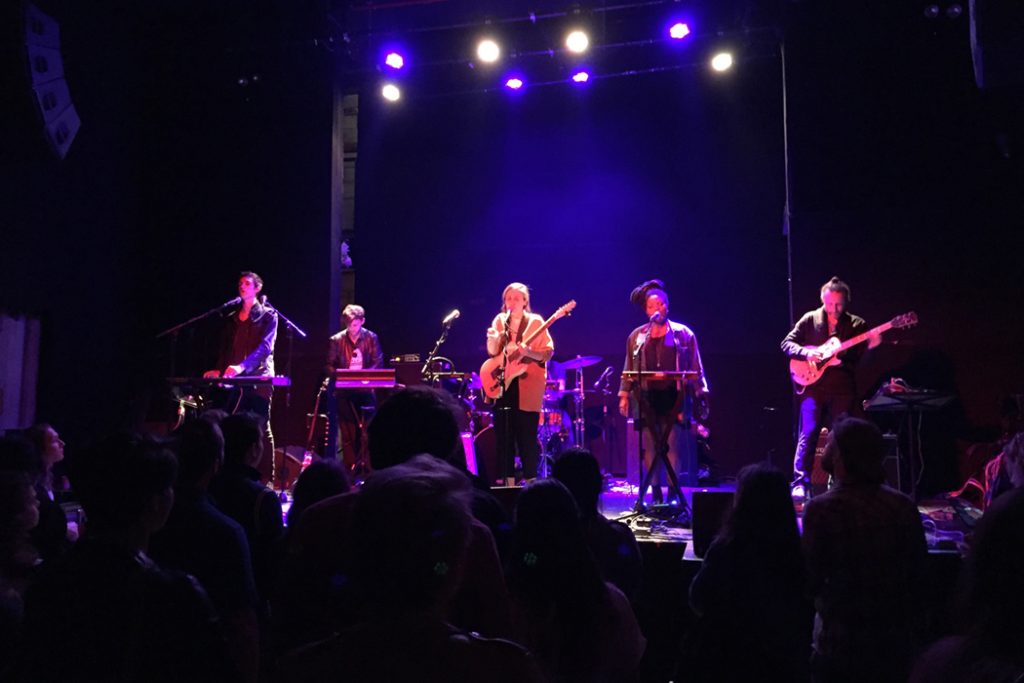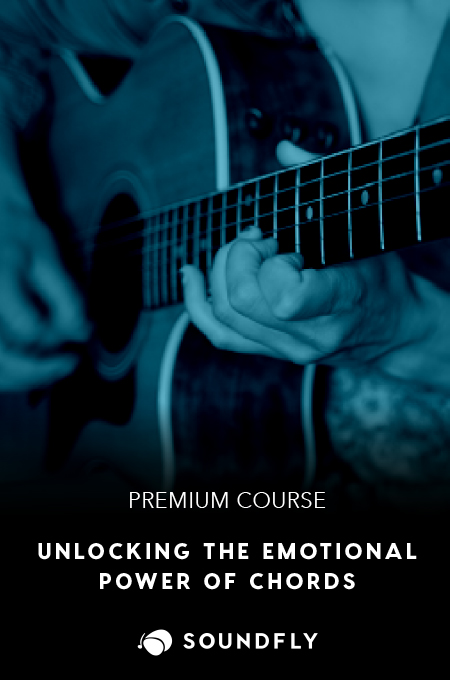+ Our brand new course with The Dillinger Escape Plan’s Ben Weinman teaches how to make a living in music without making sacrifices. Check out The Business of Uncompromising Art, out now exclusively on Soundfly.
As a showgoer, how often do you power through three opening acts only to find yourself too exhausted to enjoy the headliner? By the time they finally reach the stage, do you wish they’d just wrap up so you can go home and use a toilet that’s not drenched in beer… or, is that pee?
In my adopted hometown of Austin, this is the norm. Audiences have responded by simply skipping the openers who will probably suck, play too long, and not enhance one’s life in any way. National touring acts have responded by specifically asking for “NO LOCAL SUPPORT.” Who can blame them? They want to play to their audience before the warm-up acts wear them out. Venues have responded in various ways – my favorite move is when they put local support in the closing slot. My least favorite is when they just axe local bands from these bills.
But, sometimes, even the headliner just isn’t that compelling. In February, I caught a reunited Austin band that I was too young to catch during their heyday. They recently released an excellent new album, and I was excited. About three songs in, I was bored. I knew I’d seen everything this band had in their bag of tricks.
The audience, at peak anticipation of the band’s entrance, was probably close to 200. The room looked full. Midway through, it had dwindled to half. I looked around at the other audience members and wondered, “Am I the only one that wishes this would just end? Why don’t I leave?”
I was just hoping to be entertained at some point. I’d paid to get in, so I thought I might as well hang on and see if something novel ever happened. It didn’t.
I powered through the remaining 50 minutes of so-loud-I-couldn’t-tell-one-song-from-another punishment. The lighting never changed. There were virtually no dynamics — just skull crushing amps that made sure I couldn’t hear the drums or most of what else what happening. I guess I felt compelled to endure it because I’d paid $20 to get in.
That band didn’t lose me as a fan, but I don’t think I’ll ever pay to see them live again. I just wasn’t entertained.
I was ruminating on all of this when a friend posted Drew Ailes’ “Six Reasons Your Band Shouldn’t Play Longer Than 20 Minutes” on Facebook, published three years ago by The Village Voice.
Here are the six reasons (minus Ailes’ catty commentary):
6. Everyone is bored.
5. People will miss your set.
4. You’ll look good even if you aren’t.
3. Leave them wanting more.
2. The audience will tell you how long to play.
1. Your band probably sucks.
As smug as it comes off, he’s kind of right. But I would’ve flipped #1 and #6. A bored audience is the absolute best reason to play a shorter set. If that reunited band from my above story had only played 20 minutes, I may have come away from the show thinking they were amazing instead of thinking that I’d had enough for a lifetime.
But where Ailes is perhaps a bit short-sighted is that maybe playing shorter is not the answer we should be taking away as performers. If your audiences seem bored at your shows, why not just be more entertaining?
It’s hard, though, because doing so requires you to ignore the very thing that so many late-20th-century artists have been saying not to do — listen to what your audience thinks! I’ve pondered the merits of doing stuff you like and demanding that audiences follow along versus just giving them what they want every moment — like a cover band, or, well, basically most DJs. But there’s room for both. The key is simply to be as entertaining as possible in what you decide to do. Be compelling, not predictable or redundant.
Audiences want to be engaged by performers who might just do something fun or funny or scary or weird or unexpected…. not to stand in a dank room looking at someone asking to be loved simply because they wrote a few songs and showed up to read them in public.
Entertaining hip, young audiences in nightclubs isn’t much different from entertaining children or the elderly. Heck, if you want a fast and sobering answer to the question “is my band entertaining?” try playing your show to a group of children. You will know immediately!
That said, entertaining children can quickly become as easy as simply breaking things. Children love novelty but don’t have enough experience to see through it nor to appreciate much substance.
So, here’s a better test — try putting your act in situations where you play to a more diverse audience and gauge responses. If all you’ve ever played are hip dive bars to middle-class, white college students who mostly go out on Saturday night so that they can coordinate their brunch plans on Sunday, and you’re not getting any traction, well, maybe they aren’t the audience you should be courting.
Branch out! Try playing a restaurant, a performing-arts space, a kid-friendly business, an airport, a sidewalk. Try playing a three-hour gig where you’re the only act — then keep doing it as long as it’s useful. Tailor your set to the audience for any given night, but don’t change who you are.
I’m a big proponent of finding your audience and then giving them what they want. The key is finding your audience first so that what they want is already basically what you do. My band stumbled into the lives of families with children in our region when we re-imagined “The Nutcracker Suite” in our own image. It turned out that we were playing to the wrong audiences for years trying to impress middle-class white brunchers. We didn’t mean to attract this new group of fans, we just did. So we ran with it!
Suddenly our fans were people who’d never heard of Pitchfork or any of our influences like Don Caballero, NoMeansNo, or Sleepytime Gorilla Museum. All they knew was that they liked us and thought we were fun to come see over and over again. In doing so, we found ourselves playing gigs we hadn’t thought we ever would. We started playing less cool shows in clubs and more three-hour gigs in restaurants, community events, art spaces, etc.
We found an audience we knew we could entertain.
There’s a restaurant in Ft. Worth we play twice a year, and during the first set, it’s always a room full of ropers (for those not in the know, ropers are urban cowfolk in starched jeans and belt buckles the size of hubcaps). Suffice to say, this is not our audience. And, yet, by working up our entertainment value, we have at least kept from getting Lonestar bottles thrown at us. Heck, last time, some roper gave us a $20 tip!
The question is: Who’s your audience, and what, ultimately, do they want to see?
Improve your music with creativity & curiosity on Soundfly.
Subscribe to our YouTube channel for weekly videos, or join Soundfly’s all-access membership to all of our artist-led online music courses, an invite to join our Discord community forum, exclusive discount perks from partner brands, access to artist Q&As and workshops, and more.




